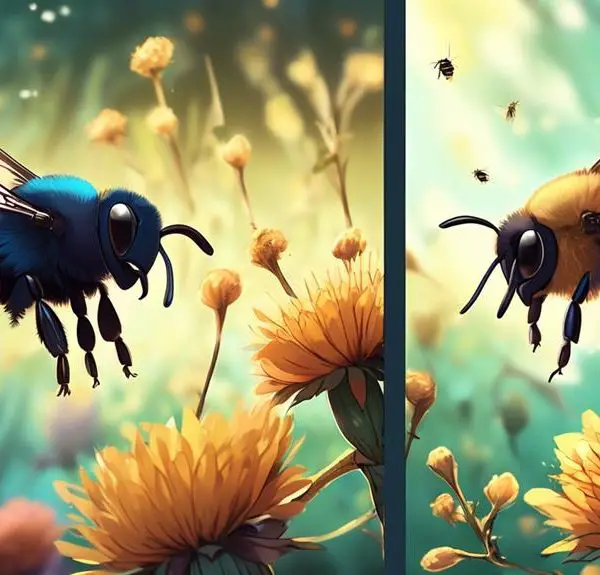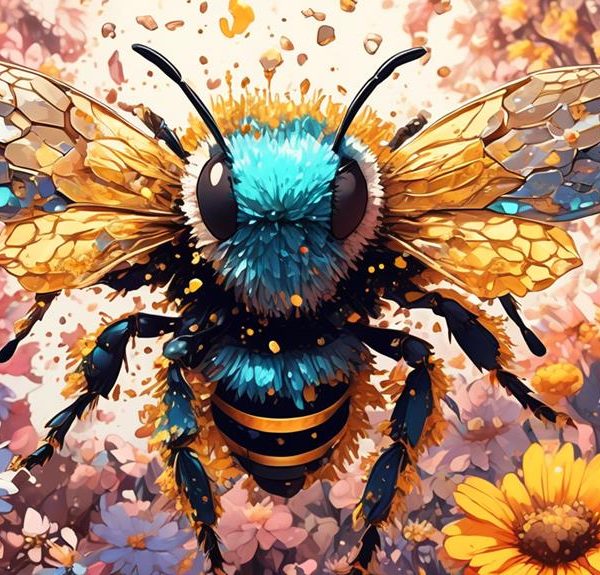Curious about the intriguing design of mason bee houses and if they have exits at the back? Dive in to discover more!
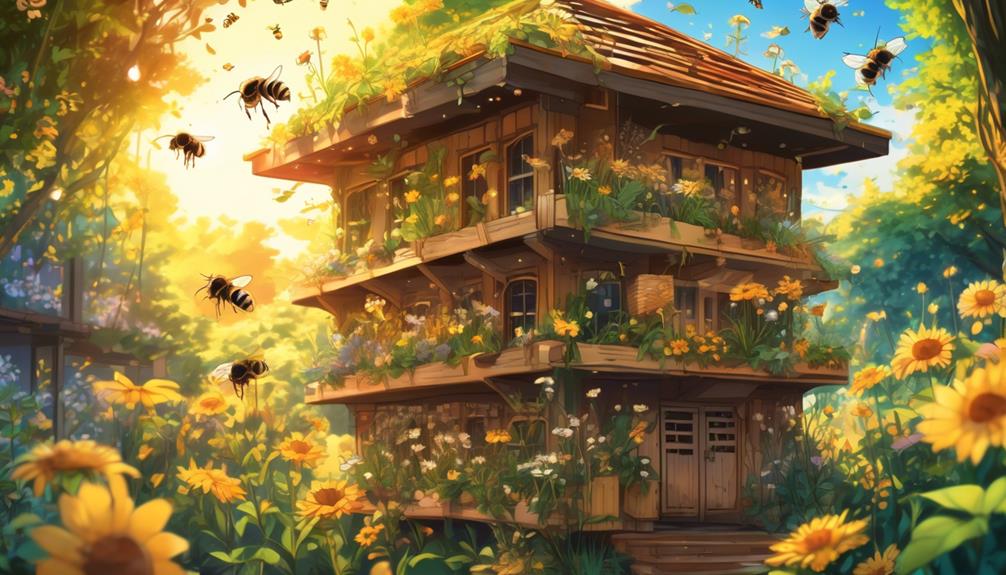
Are Mason Bee Houses Open at the Back
Imagine, if you will, being a kid again and running through a corn maze. You're weaving in and out, left then right, with no end in sight until suddenly, there it is – an exit, a breath of fresh air.
This vivid childhood memory may not seem related to mason bees, yet it's a fitting metaphor when discussing the design of their homes.
The question you're probably asking yourself now is – do mason bee houses offer the same relief, an exit at the back, or are they closed off, creating a solitary dead end?
It's a question worth pondering, and one that holds more significance than you might initially think.
Key Takeaways
- Mason bee houses do not need to be fully enclosed; an open back is important for proper ventilation and airflow.
- Regular maintenance is crucial for bee houses, including cleaning and replacing tubes.
- Different bee species have specific preferences for bee houses, so not all bees will use any bee house.
- Mason bees require houses with specific dimensions, such as tubes that are 6-8 inches long and 5/16 of an inch in diameter.
Understanding Mason Bee Houses
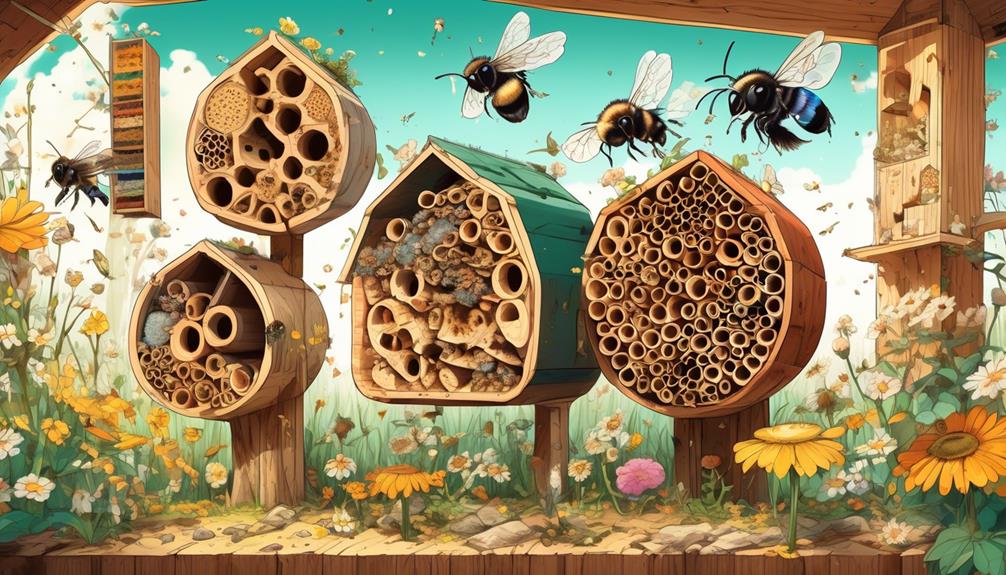
Typically, you'll find that mason bee houses are unique structures designed specifically to attract and house these beneficial insects, often featuring a series of tubes or holes where the bees can nest and lay their eggs. These structures are typically made from wood or bamboo, providing a natural and inviting environment for the bees.
But there's more to these houses than meets the eye. Each tube or hole is precisely sized to accommodate the solitary nature of mason bees. Unlike honeybees that live in large colonies, mason bees live alone, each female constructing and provisioning her own nest.
When choosing a location for a mason bee house, you'll want to consider factors such as sun exposure and proximity to flowering plants. Mason bees need early morning sun to warm them up for the day's activities and a variety of pollen sources for their offspring.
The back of a mason bee house is often left open. This isn't a design flaw; rather, it's intentional. The open back allows for the easy removal and cleaning of tubes, helping ensure a healthy environment for future bee generations. Careful management of mason bee houses is a crucial part of supporting these important pollinators.
Design Features of Bee Houses
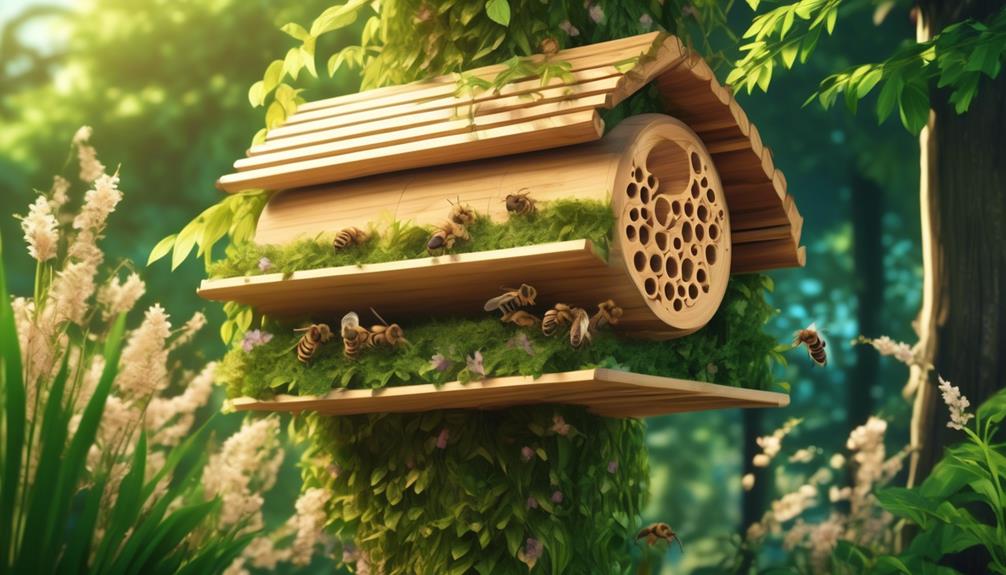
While understanding the importance of an open back in mason bee houses, you'll also find it intriguing to explore other design features that make these structures a perfect home for our solitary pollinators.
A well-designed mason bee house includes a variety of features to accommodate the needs of its inhabitants. For instance, the tube size is crucial as it determines which species will nest. Typically, diameters range from 3/32 to 3/8 inches.
Another key aspect is the material used to construct the tubes. The preferred choice is untreated wood or cardboard, as these are safe for the bees and facilitate easy cleaning.
Lastly, the design should include a roof to protect the tubes from rain and a landing platform to aid the bees in entering the tubes.
Here's a table to summarize the key design features:
Feature | Description |
|---|---|
Tube Size | Ranges from 3/32 to 3/8 inches |
Material | Untreated wood or cardboard |
Roof | Protects the tubes from rain |
Landing Platform | Aids bees in entering the tubes |
The Importance of Ventilation
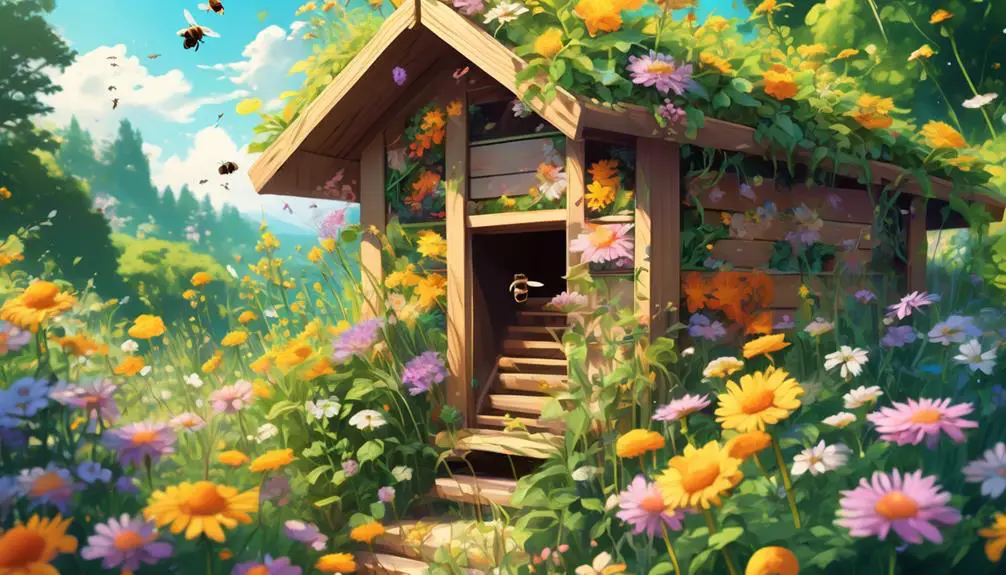
In creating a hospitable environment for your mason bees, proper ventilation within the bee house plays a crucial role. It's not only about temperature regulation, but it also helps prevent the growth of harmful molds and fungi.
Consider this: Mason bees are incredibly sensitive to their surroundings. They need a specific temperature range to thrive and reproduce. If their house lacks proper ventilation, it can become overly humid or excessively hot, potentially harming the bee's development.
Moreover, without adequate airflow, moisture can get trapped inside the bee house. This creates a perfect breeding ground for molds and fungi, which can be detrimental to the bees' health. It's often overlooked, but maintaining a clean, dry environment is crucial for the bees' survival.
To ensure adequate ventilation, you may want to opt for a bee house with an open back. This design allows air to circulate freely, helping to keep the internal temperature and humidity levels in check.
Common Misconceptions About Bee Houses
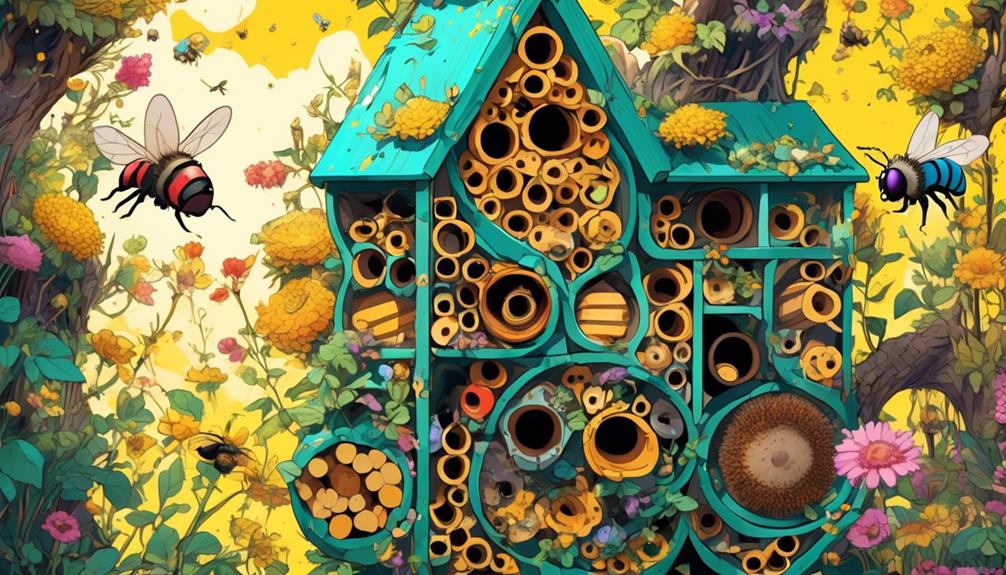
Despite the importance of ventilation, many misconceptions persist about the design and function of bee houses, particularly those intended for mason bees. You may have heard that mason bee houses need to be completely enclosed or that they don't require maintenance. However, these are common misconceptions that can lead to poor conditions for the bees.
Here's a table to clear up some of these misunderstandings:
Misconception | Reality | Explanation |
|---|---|---|
Bee houses need to be completely enclosed | Mason bee houses should not be fully enclosed | Good ventilation is crucial, and a back opening can help. |
Bee houses don't require maintenance | Regular maintenance is essential | Cleaning and replacing tubes can prevent disease and parasites. |
All bees will use any bee house | Specific bees prefer certain houses | Mason bees, for instance, require houses with specific dimensions. |
Tips for Setting Up a Bee House
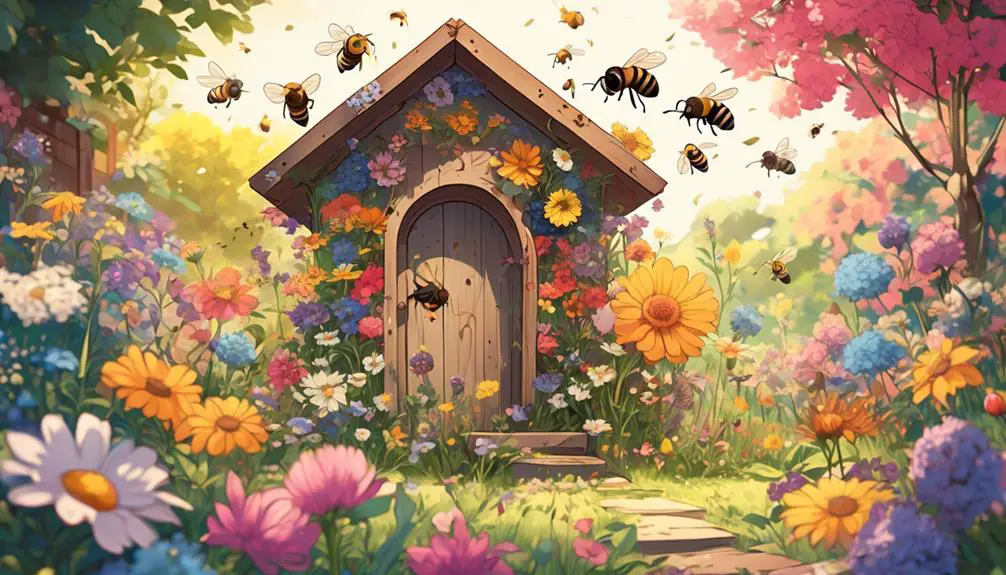
So, how do you go about setting up a bee house that's perfect for mason bees?
First, select a sunny location. Mason bees need morning sun to warm them up and kick-start their day. Position the bee house facing the southeast or east, where it'll get the first light.
Next, think about height. Your bee house should be at least a meter off the ground. This keeps the bees safe from predators and flooding. It's also crucial to ensure the house is secure, so it doesn't swing or sway in the wind.
Now, let's talk about the house itself. It should be open at the back for cleaning and monitoring purposes. And the tubes? They should be 6-8 inches long with a diameter of 5/16 of an inch. This size is ideal for mason bees.
Lastly, don't forget to provide a mud source close by. Mason bees use mud to seal their nests. If there's no mud available, they won't stay. Set up a mud bowl or ensure there's a damp patch of ground nearby.
Frequently Asked Questions
What Types of Bees Are Typically Attracted to Mason Bee Houses?
You're likely to attract solitary bees to mason bee houses, specifically mason bees and leafcutter bees. They're non-aggressive, excellent pollinators and prefer such structures.
You won't attract honeybees or bumblebees, as they're social bees and require different habitats.
Mason bee houses provide the ideal nesting site for these solitary bees, offering them a secure and comfortable environment to lay their eggs.
How Does the Lifespan of a Mason Bee Compare to Other Bee Species?
In comparison to other bee species, mason bees have a relatively short lifespan. Typically, they live for only about 10 weeks.
Contrastingly, honey bees can survive for up to five months, or even years if they're queens.
However, don't let a mason bee's short life fool you. They're extraordinarily efficient pollinators, often outperforming their long-lived counterparts.
It's a case of quality over quantity!
Can Mason Bee Houses Be Used as a Teaching Tool for Children?
Absolutely! You can use Mason bee houses as a fantastic teaching tool for children. They're a hands-on way to learn about the environment, pollination, and the role of bees in our ecosystem.
Kids can observe the bees' behavior, life cycle, and even help in the upkeep of the houses.
It's a fun, interactive way to bring science and nature to life, sparking curiosity and fostering a love for learning.
What Are Some Natural Predators of Mason Bees and How Can They Be Deterred From Bee Houses?
Birds, spiders, and wasps are natural predators of Mason bees. You can deter these predators by placing your bee house in a quiet, less frequented area. Elevating the house to at least five feet can also help to keep out pests.
You'll want to ensure the tubes are deep enough to protect larvae. Remember, it's important to clean the house annually to prevent parasites and diseases.
Are Mason Bee Houses Beneficial for the Bee Population or Do They Have a Negative Impact?
Yes, mason bee houses are beneficial. They provide a safe space for bees to lay their eggs, free from natural predators.
They're not just good for the bees; they're good for you too. Mason bees are exceptional pollinators, so having them around will boost your local plant life.
However, it's important to maintain these houses properly to keep mite levels low and prevent any potential negative impact.
Conclusion
In conclusion, mason bee houses aren't open at the back. They're designed for ventilation, but not open access. Don't let misconceptions steer you wrong.
Remember, your bee house needs to be robust, well-ventilated, and placed properly. By following these guidelines, you're on your way to setting up a successful and welcoming home for these industrious pollinators.
Keep learning and adapting, because your efforts make a difference for these beneficial insects.

